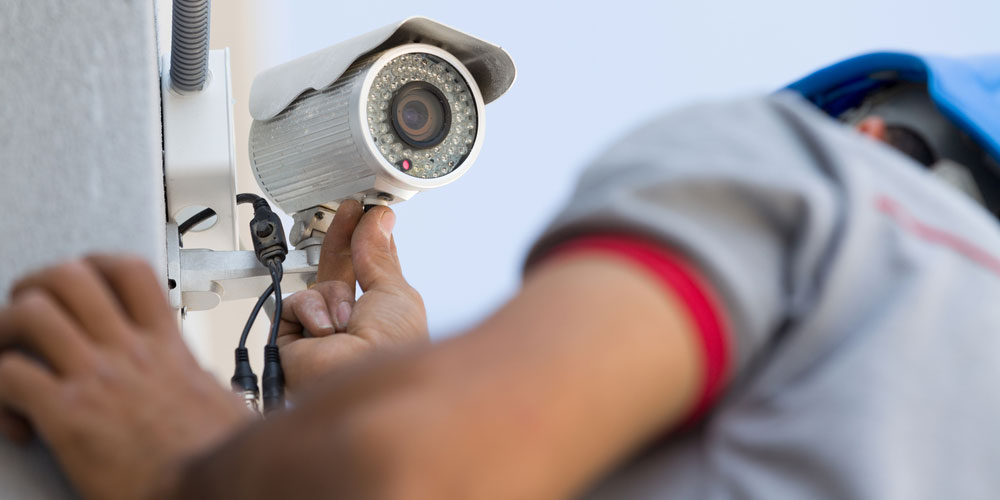Lock Blog
A resource for consumers, locksmiths, and security professionals
A resource for consumers, locksmiths, and security professionals

Thousands of years ago, the first locks were invented somewhere in the Near East. The ancient elite would guard their precious jewels against potential thieves looking for a fortune of their own. Back then, if you had something worth protecting, you didn’t want to be caught off-guard without a lock.
Thousands of years passed, and both personal wealth and lock technology improved. Soon, many people had money worth protecting, then homes, then televisions, then smartphones. From pin tumbler locks to biometric locks to smart locks, lock technology adapted to the needs of an ever-widening number of consumers.
One new and exciting technological development is the Internet of things. Also known as IoT, this technology connects standard household objects to the internet, broadening their features. But is it good for home security? Does it help or hinder your locks?
Here’s a summary of IoT security features:
The Internet of things is a network of any device that isn’t a computer, smartphone, or tablet that’s connected to the internet. It includes many different technologies, almost all with the word “smart” tacked onto the front.
Any “thing” can potentially be part of the Internet of things, but a few are common. Printers are very often part of the Internet of things. Many medical devices are part of IoT, including imaging systems, personal medical devices, and patient monitoring systems. Smart fridges, smart watches, and smart thermostats are all IoT.
Your security system can also potentially connect to the internet. A solid security system is part of a well-equipped smart home, and its compatibility with the internet is helpful in certain areas.
IoT technology is becoming increasingly popular and integrated more and more into our daily lives. They’re a big part of how many businesses operate, but they’re also helpful to consumers. This is why IoT security is so important.
Smart locks are locks that don’t open with a key but with a smart device such as a phone. They need to connect to the internet for this, making them part of the Internet of things.
This changes the entire process of security and access. After all, IoT security is very different from physical security. Rather than relying on physical pins and the way they conform to a key’s shape, smart locks utilize encrypted codes that you’d need a computer to decipher.
Cryptography completely changes a lock’s vulnerabilities. IoT security isn’t necessarily more secure – it’s just differently secure. People typically enjoy upgrading to smart locks because of the convenience they offer. It’s easier when you only need to whip out your smartphone instead of fiddling with a key.

Security cameras are another common application of IoT security technology, as they almost always connect to the internet. Some wireless cameras store their data in local SD cards, but most utilize cloud technology or ethernet cables to store their footage over an internet connection.
Internet storage means you can access footage from almost anywhere. Sometimes you can find it on your smart device, and other times you need a computer hooked up to the camera before it can play back your footage.
This applies to smart doorbells as well, not just typical security cameras. If you’re recording security footage in your home in any capacity, it’s likely through IoT technology.
Security camera footage is generally less secure than a smart lock. Cameras are easy to hack into, so be careful if installing one of these into your home.
Other devices can also supplement your security by connecting to the Internet. Once again, almost anything can become part of the Internet of things. And more and more devices are integrating this technology into their usual operations.
For example, plenty of sensors are part of IoT technology. If you have motion sensors, whether it’s through IoT security cameras or motion lights, they may connect to the internet.
It’s often unclear exactly how many devices are connected to your Internet of things, making IoT security a bit difficult. Keep track of any internet connectivity that any device you own has.
Many industries are developing IoT technology purely because it’s the hot new thing, and they don’t always know how to secure their products. Some IoT devices are missing basic security measures that other industries have used for years. There also aren’t any standards for IoT security yet. The truth is there are so many IoT devices that it’s hard to establish a catch-all rule.
Security is also expensive to implement, and manufacturers often don’t anticipate this. They tend to prioritize features over proper security in their budgets.
IoT security threats are often difficult to patch. Patches can take several days to be implemented, leading to insecure devices for longer than necessary.
But the problem isn’t always on the developer’s end. Overseeing multiple devices is difficult – extra security by the user is often necessary, and many customers aren’t aware of that fact. And remote access for users means hackers can also access devices remotely, which is an unavoidable issue.
Fortunately, these vulnerabilities are less pronounced in consumer electronics. Security cameras are prone to vulnerabilities, but electronics like smart locks are often better equipped.
These concerns may be alarming to those that own IoT-connected security devices. Fortunately, there are ways to keep yourself safe. Follow these steps when choosing and setting up one for your home.
There’s also 3rd-party software you can use that helps with IoT security. Do some research into which software is best and which is compatible with your device. Look for software that segments your internet connection, can identify users and monitor traffic, and can update your device automatically.
The Internet of things still has a long way to go with security. Not because the technology isn’t there but because there are no standards, and many manufacturers don’t know how to implement security.
There are a few principles in security for the Internet of things. Implement IoT security solutions in both the hardware and software. Have a secure WiFi connection, check your privacy policy, change the default password, update your device, and keep internet connections segmented.
The three most common IoT security threats are network scans, worms, and password mismanagement. The third is very easy to solve – change your password to something hard to guess and never give it away. The other two IoT security challenges come down to how the manufacturer makes the device and whether or not they use intelligent security principles.
Increased connectivity can be helpful. Having your home become one system of interconnected devices controlled at your convenience is an appealing fantasy. But, like all technology, it has drawbacks.
Fortunately, there are ways to combat these drawbacks. The risks in security are more of a temporary thing as the technology develops further, and soon the convenience will never be outweighed by a sacrifice in security. A connected Internet of things is still a fantastic emerging technology.
And this technology can still be helpful to your home security system. There’s no more keeping track of a series of keys. You don’t even need to worry about your lock getting picked. You can use your smart device to open your door. And having constant security footage helps a lot in keeping things safe.
IoT technology can be useful if you know the pitfalls to avoid. If you want to stay tech-savvy, keep on top of this technology as it develops. And if you want to install a smart device, do so as safely as possible, keeping all of the right security principles in mind.
Category: Buying Guides, Safety & Security